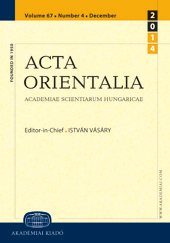The existence of factors in the three time periods. Sarvāstivāda and Madhyamaka buddhist interpretations of difference in mode, difference in characteristic marks, difference in state, and mutual difference
The existence of factors in the three time periods. Sarvāstivāda and Madhyamaka buddhist interpretations of difference in mode, difference in characteristic marks, difference in state, and mutual difference
Author(s): Bart DesseinSubject(s): Theology and Religion, Comparative Studies of Religion, Indian Philosophy
Published by: Akadémiai Kiadó
Keywords: Indian Buddhism; Chinese Buddhism; Sarvāstivāda; Vaibhāṣika; Madhyamaka; Sanlun; Jizang;
Summary/Abstract: This article focusses on discussing the reason of existence of factors ( dharma ) in the three time periods ( trikāla ) as it is recorded in the Vaibhāṣika * Abhidharmamahāvibhāṣāśāstra and in the Sarvāstivāda works that postdate this text. The origin of this discussion is traced back in the earliest Sarvāstivāda Abhidharma works. Also the Chinese Sanlun philosopher Jizang (549–623), in his “ Shi’er men lun shu ”, a commentary on Nāgārjuna’s * Dvādaśadvāraka “ Shi’er men lun ”, raises this discussion. Here, references are made to the vibhāṣā literature. The treatment of the subject in the “ Shi’er men lun shu ” reveals (1) that the Chinese Sanlun (and Madhyamaka) philosophers were familiar with this discussion in Sarvāstivāda philosophy; (2) that they criticised the Sarvāstivāda viewpoint; and (3) gives evidence for a rise of Indian Madhyamaka philosophy and a place of origin of Nāgārjuna in the North of the Indian subcontinent.
Journal: Acta Orientalia Academiae Scientiarum Hungaricae
- Issue Year: 60/2007
- Issue No: 3
- Page Range: 331-350
- Page Count: 20
- Language: English
- Content File-PDF

